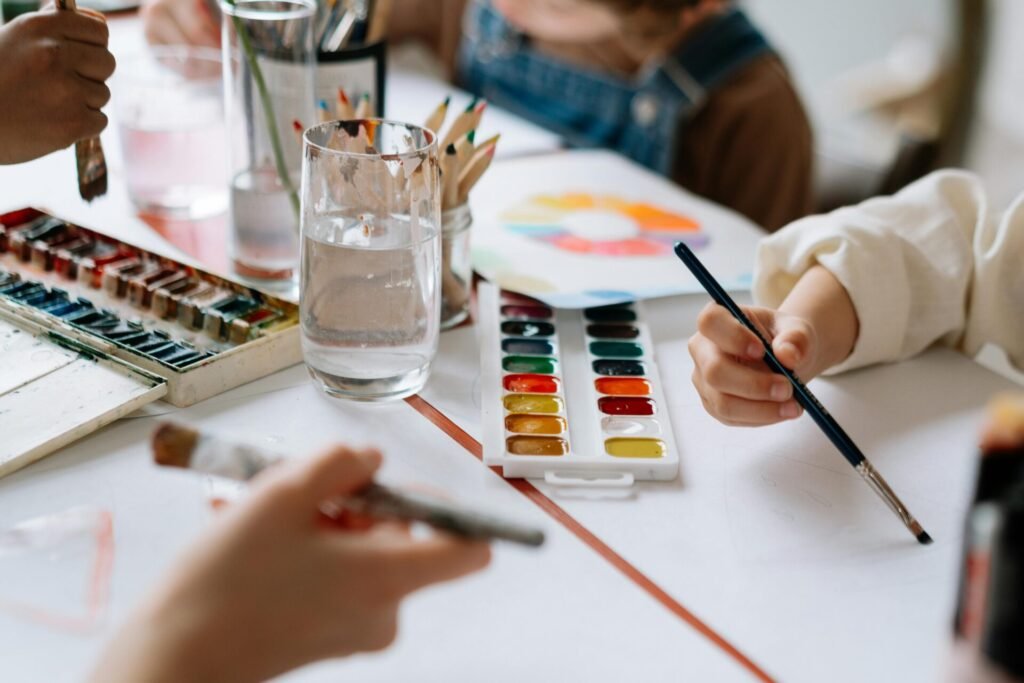Why Criticism Feels So Personal to Kids
Talking to your child about art criticism, rejection, and creative blocks can feel like walking a tightrope between encouragement and honesty. Creative expression is deeply personal—especially for children—so when their artwork is judged, dismissed, or fails to meet their own expectations, it can sting. As a parent or caregiver, your role isn’t to shield them from discomfort, but to guide them through it with empathy, insight, and practical strategies. This article explores how to approach conversations about child art criticism in ways that foster emotional resilience, growth, and creative confidence.
Children often see their artwork as an extension of themselves. A comment about their drawing not “looking right” may feel like a judgment of their worth. They’re still learning to separate effort from outcome, which is why external feedback—even when well-meaning—can shake their confidence.
Understanding that kids process criticism differently than adults allows you to tailor your approach. Their emotional filter isn’t developed yet, so what we see as constructive advice may come across as a direct rejection.
Framing Criticism as a Conversation, Not a Verdict
Rather than jumping in with technical advice or praise, start by asking questions:
- What were you trying to express here?
- What part of this do you like most?
- Was there something you were hoping would turn out differently?
This puts the child in control of the dialogue and reframes critique as collaboration. When discussing feedback from others—like teachers, peers, or judges—emphasize that opinions are subjective and offer only one lens of perception.
Avoid “fix-it” language like “you should have” or “next time just,” which can come off as dismissive. Instead, use reflective prompts such as “What could we try differently if you made another version?”
Rejection: Navigating Disappointment Without Discouragement
Rejection might be a denied gallery entry, a school art show cutoff, or even being left out of a group project. These moments can feel monumental for a child.
What matters most is how they interpret the experience. Help them see rejection as situational, not personal. Explain that creative fields are often competitive and that even professional artists face constant “no’s” before receiving a “yes.”
Encourage your child to keep creating and submitting. Normalize the process, not just the outcome. Use stories—real or fictional—to show that rejection happens to everyone, and often serves as fuel, not failure.
Understanding and Easing Creative Blocks
Creative blocks aren’t just adult territory. Children hit walls too—moments when drawing feels hard, ideas feel flat, or comparison kills motivation.
Instead of demanding they “just try harder,” offer tools to recharge:
- Change the medium: If they’re tired of pencils, try watercolor, clay, or digital.
- Mix in fun prompts: Random drawing challenges can spark surprise ideas.
- Create without outcome: Remind them that not all art needs a purpose or to be “good.”
When a child says, “I don’t have any ideas,” validate their frustration and then gently explore where their imagination tends to drift. Often, stress around performance—not lack of ideas—is the true culprit.
Modeling Resilience and Creative Openness
One of the most powerful tools you have is showing your own relationship with creativity. If you share your own setbacks and how you push through creative frustrations, you give your child a blueprint for resilience.
This might sound like:
- “I tried to sketch today but couldn’t focus. I just scribbled for fun instead.”
- “Remember that time my project didn’t turn out how I hoped? I made peace with it and learned something.”
Children mirror what they see more than what they’re told. Show them that making art is a process, not a performance.
Language That Builds Confidence, Not Pressure
Avoid inflating praise into pressure. Phrases like “You’re the best artist ever!” may feel uplifting but can also create internal anxiety to always be “the best.” Instead, offer specific, curiosity-driven feedback:
- “I love how you blended those colors—what made you choose them?”
- “There’s such a strong mood in this. Tell me more about the story behind it.”
By focusing on effort, process, and intention, you affirm the value of their work without tying it to perfection.
When to Step Back and Let Them Sit With It
Not every uncomfortable moment needs intervention. If your child seems quiet or discouraged, resist the urge to immediately jump in with reassurance. Sometimes, sitting with disappointment is where growth happens.
Be available without rushing the healing. A simple, “I’m here when you want to talk,” gives them autonomy without abandonment.

Sketchbooks.org | ARTIST MARKETING GUIDE
Types of Portfolio Cases and What to Look For | A Guide for Artists, Designers, and Creatives
Why Your Portfolio Case Matters Whether you're a student preparing for your first critique, a freelance designer meeting with clients, or a seasoned artist showcasing your work at a gallery, choosing the right portfolio case...
Frequently Asked Questions
What if my child gets upset by feedback from others?
Validate their emotions, then help them process it as just one perspective among many.
How can I tell if criticism is harming their confidence?
If they stop creating, express anxiety about showing work, or consistently say they’re “not good enough,” it’s time to intervene supportively.
Should I let teachers critique their art without my involvement?
Support constructive classroom critique, but stay engaged to ensure it’s developmentally appropriate and not shaming.
How can I help them deal with art show rejections?
Frame it as part of the creative journey, not an end. Highlight how even professional artists face rejection regularly.
Can creative blocks be a sign of something deeper?
Sometimes, especially if paired with broader signs of stress or withdrawal. But most often, it’s part of the creative cycle.
What language helps build artistic resilience?
Use curiosity, observation, and encouragement instead of broad praise or technical correction.
Should I push them to keep creating after a setback?
Encourage, yes—but avoid pressure. Offer new mediums, environments, or inspirations instead.
How often should I talk with my child about their art process?
Regularly, but casually. Let it be part of your normal conversations rather than a formal check-in.
Is comparing their art to others always harmful?
Yes, especially if it’s framed competitively. Instead, celebrate diversity in style and approach.
Final Thoughts
Navigating child art criticism is less about shielding them from tough feedback and more about building a resilient relationship with creativity. Your role is to help them transform criticism into curiosity, rejection into motivation, and blocks into opportunities for play and exploration. When kids learn to weather the ups and downs of creative life, they gain skills that stretch far beyond the sketchbook. And the more you show them that their art—and their voice—matters, the more confident they’ll become in expressing it.
Ready to Share Your Work?











Validating feelings before offering advice… That part really resonated.
My child opened up about why she stopped drawing—and it started with one mean comment.
You need a new language for talking about creative resilience without making it feel like a lecture.